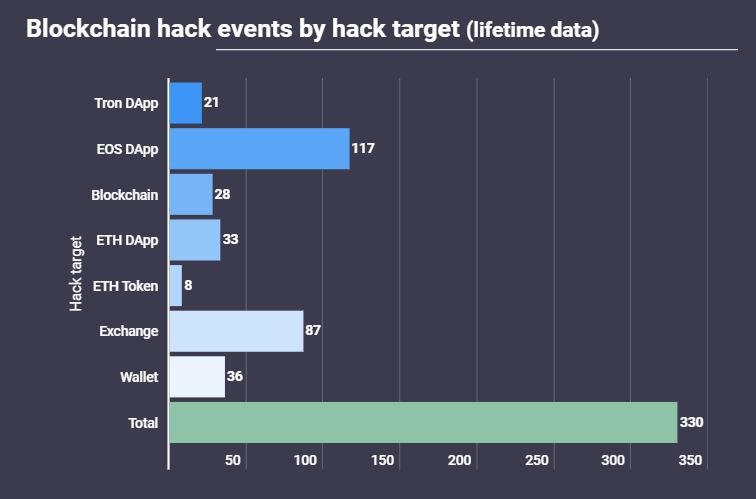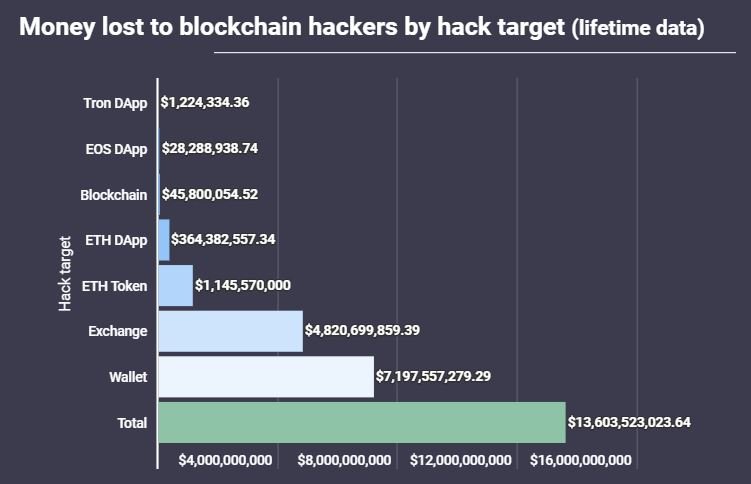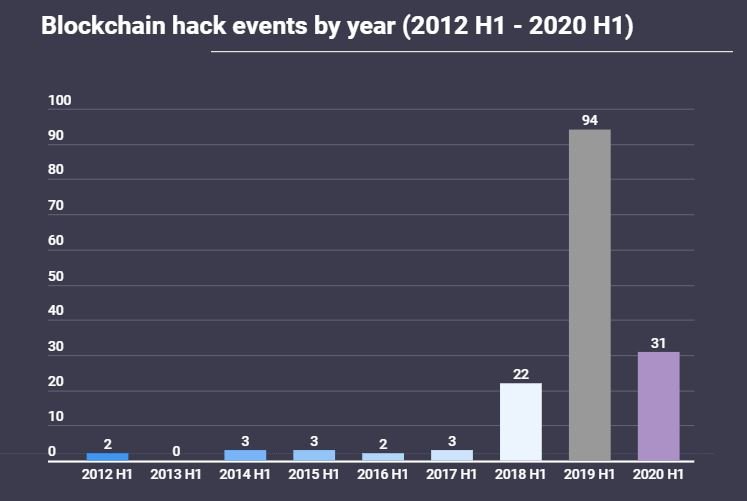A report by Atlas VPN security team states that the cybercriminal community has stolen more than $13 billion by exploiting some 330 blockchain hacks. Although this technology is mainly used to conduct cryptocurrency transactions, there are many other applications that threat actors might try to compromise.
Attacks with a higher success range target EOS DApps, whose providers face nearly 36% of all blockchain-related attacks; in other words, these attacks equate to about $30 million in losses for this industry. EOS DApps are decentralized applications based on the EOS blockchain. Founded in 2017, the EOS contract platform was built to provide an easy-to-use, business-friendly infrastructure to create DApps.

According to statistics, the next big target of blockchain attacks is any cryptocurrency exchange platform, which have fallen victim to 87 successful attacks that generated losses of nearly $4.8 billion.
One interesting thing is that despite a small number of successful attacks on cryptocurrency wallets, these crimes are much more lucrative, as the 36 attacks reported so far have resulted in losses of more than $7.1 billion USD. In other words, on average $199, $932, $146 is lost in each incident.

Since its launch in 2009 blockchain technology has gone through multiple stages, from the introduction of Bitcoin to the creation of smart contracts, among other implementations, although this development has also favored the advancement of malicious hacking, which has grown by 1450% between 2012 and 2020.
Still, the number of successful attacks in the first half of 2020 fell more than three times compared to the same period in 2019. What’s more, last year there was the highest point of activity of blockchain hackers, who managed to launch 94 successful attacks during the first half of 2019.

With a quarter remaining 2020 to analyze, more cybersecurity incidents related to blockchain technology are likely to occur before the end of the year. However, according to historical data, it appears that 2020 will not reach the record heights of last year, continuing the trend in the decline of this practice.

He is a well-known expert in mobile security and malware analysis. He studied Computer Science at NYU and started working as a cyber security analyst in 2003. He is actively working as an anti-malware expert. He also worked for security companies like Kaspersky Lab. His everyday job includes researching about new malware and cyber security incidents. Also he has deep level of knowledge in mobile security and mobile vulnerabilities.











